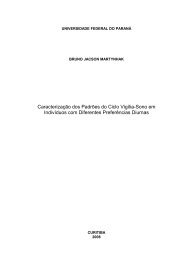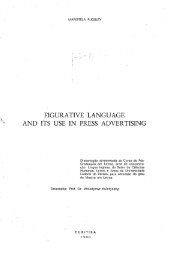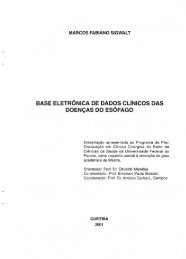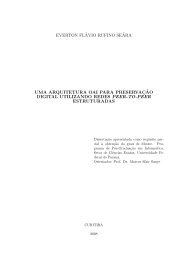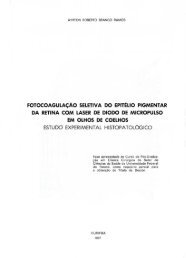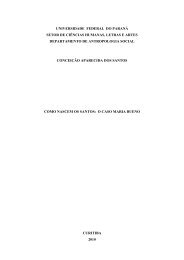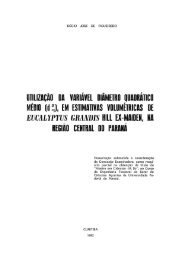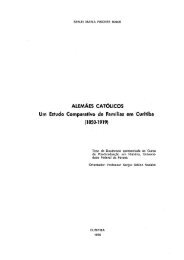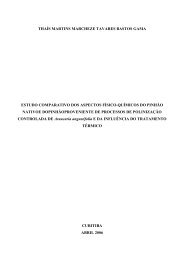towards an analysis of errors made by university students ... - DSpace
towards an analysis of errors made by university students ... - DSpace
towards an analysis of errors made by university students ... - DSpace
Create successful ePaper yourself
Turn your PDF publications into a flip-book with our unique Google optimized e-Paper software.
few genes, if <strong>an</strong>y, are confined in a race, in general the more<br />
dist<strong>an</strong>t populations are from each other, the more<br />
distinctive<br />
are their characteristics. Between these, people <strong>of</strong> Central <strong>an</strong>d<br />
South Africa <strong>an</strong>d the Caucasi<strong>an</strong>s <strong>of</strong> Sc<strong>an</strong>dinavia are examples <strong>of</strong><br />
extremes. They resemble the intervening Semitic peoples<br />
surrounding the Mediterr<strong>an</strong>e<strong>an</strong>. Such genetic diversity is a<br />
biological asset that has nothing to do with ideas about racial<br />
'superiority', or 'inferiority'. A species whose genetic<br />
constitutions have altered when environment ch<strong>an</strong>ges as has<br />
happened to the hum<strong>an</strong> species, is more likely to<br />
survive.<br />
The vari<strong>an</strong>t «in susceptibility to disease that is<br />
part <strong>of</strong> the ethnic variation is best illustrated <strong>by</strong> diseases<br />
that affect the blood (which is easy to study <strong>by</strong> chemicalmicroscopic<br />
methods). Sickle-cell <strong>an</strong>emia, for example, which<br />
provides protection against malaria,<br />
is virtually confined to<br />
peoples <strong>of</strong> the east, west <strong>an</strong>d Central Afric<strong>an</strong> origin, <strong>an</strong>d to<br />
isolated places in India. Mediterr<strong>an</strong>e<strong>an</strong> peoples suffer from<br />
thalassemia, <strong>an</strong>other hereditary form <strong>of</strong> <strong>an</strong>emia, that seems,<br />
like<br />
sickle-cell <strong>an</strong>emia, to protect people from malaria.<br />
No such ready expl<strong>an</strong>ation c<strong>an</strong> be found for<br />
contrasts<br />
in susceptibility <strong>of</strong> Rh sensitization between peoples <strong>of</strong> the<br />
north <strong>an</strong>d those <strong>of</strong> Africa <strong>an</strong>d Asia. Among Europe<strong>an</strong>s, 15 per<br />
cent <strong>of</strong> the population have Rh-negative blood; among<br />
South<br />
Afric<strong>an</strong> negroes only 5%; among Chinese <strong>an</strong>d Jap<strong>an</strong>ese only 2%.<br />
Because the components <strong>of</strong> the Rh-negative factors are combined<br />
differently<br />
in the blood <strong>of</strong> Europe<strong>an</strong> mothers, the risk <strong>of</strong> <strong>an</strong>emia<br />
resulting from Rh sensitization is even greater for Europe<strong>an</strong><br />
children th<strong>an</strong> the high proportion <strong>of</strong> the Rh-negative blood



